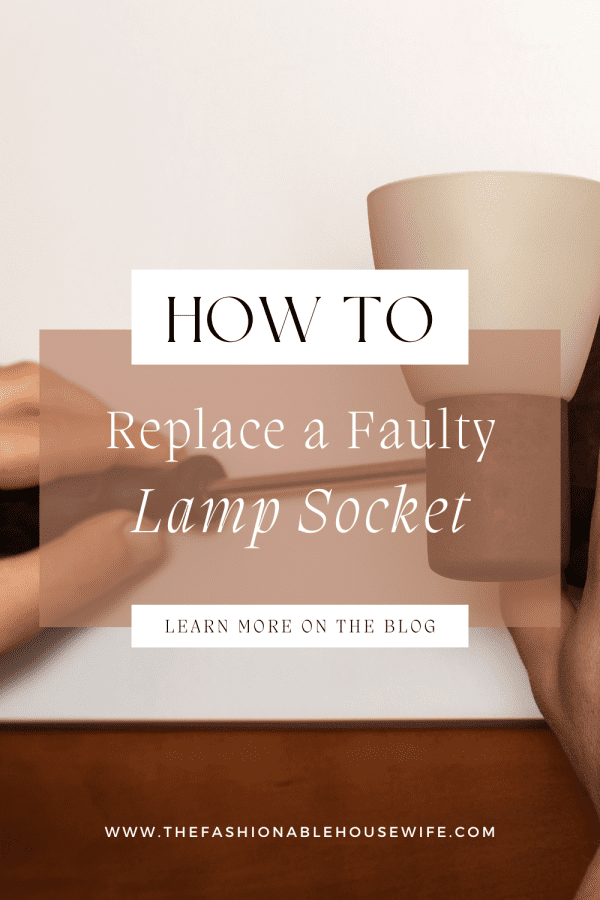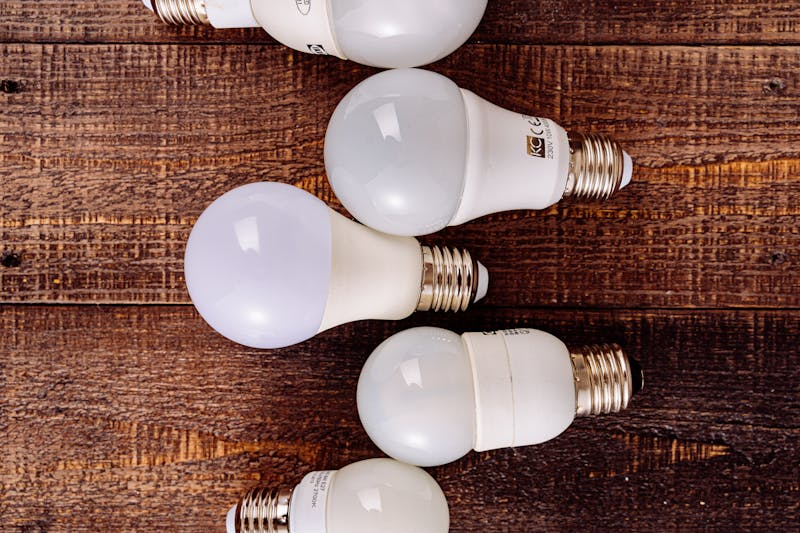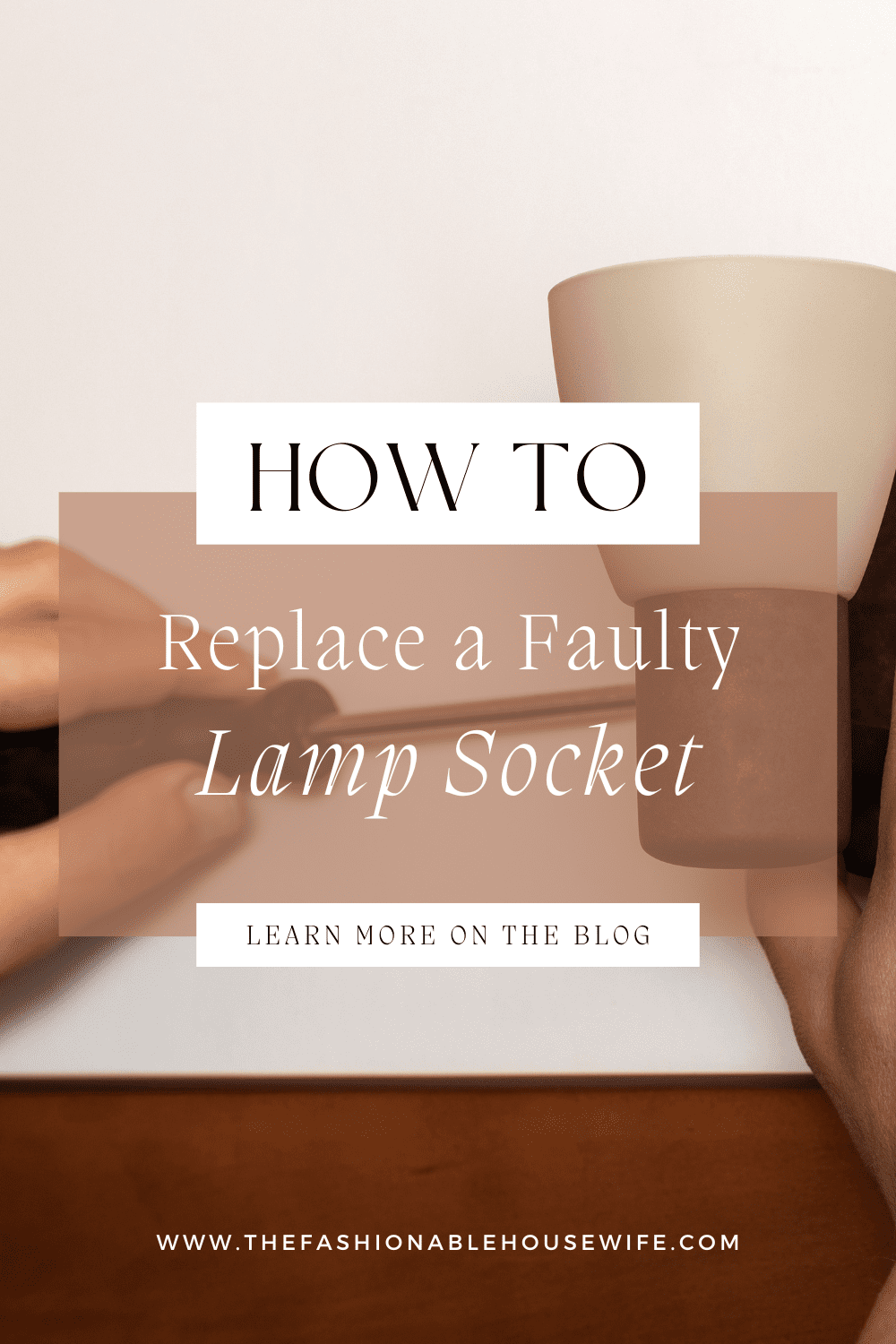How to Replace Faulty Lamp Sockets

A broken lamp doesn’t mean it’s time to toss it out. Replacing faulty lamp sockets are easier than you think — and it can save your favorite lamp from the landfill.
Whether it’s a stylish Sunmory lamp or a vintage find, a simple socket swap can bring it back to life. You don’t need to be an electrician — just a few tools and a little patience.
Let’s walk through the steps to replace a lamp socket so you can keep your home glowing.
Signs You Need to Replace Your Lamp Socket
Before you grab your tools, let’s figure out if your lamp socket really needs replacing. Here are five clear signs it’s time for a swap:
1. Flickering or Unsteady Light
If your lamp’s light keeps flickering or changing brightness, the socket could be the problem. A worn-out socket struggles to keep a consistent connection with the bulb, which not only gets annoying but can also shorten the life of your bulbs.
2. Bulbs Burning Out Too Fast
Going through light bulbs faster than usual? A damaged socket can cause poor electrical connections or overheating, which makes bulbs burn out way ahead of schedule.
3. Loose or Wobbly Bulb Fit
A light bulb should fit snugly into the socket. If your bulb feels loose or wobbles when screwed in, it’s likely not making proper contact — and that can lead to flickering, overheating, and potential safety issues.
4. Visible Damage to the Socket
Check your lamp socket for cracks, scorch marks, or any signs of melting. Physical damage like this can make the socket unsafe and stop it from working properly. If you spot any, it’s time for a replacement.
5. Signs of Electrical Problems
This one’s serious. If you notice sparks, a burning smell, or the socket feels unusually hot, unplug the lamp immediately. Don’t use it again until you’ve replaced the faulty lamp sockets to avoid safety risks.
Noticing any of these signs? It’s probably time for a new socket. Let’s get that fixed!

Lamp Sockets And Types
Lamp sockets may seem like a small part of a light fixture, but they play a crucial role in keeping your lamp working safely and efficiently. The socket connects the bulb to the electrical supply, allowing the flow of power needed to light up your space. Different types of sockets are designed for various bulbs and fixtures, so knowing which one you have (or need) is important when making replacements.
Here’s a quick breakdown of some common types of lamp sockets:
- Standard (E26/E27) Sockets: These are the most common in household lamps and light fixtures. E26 is standard in the U.S., while E27 is used in Europe. They fit most screw-in bulbs.
- Candelabra (E12) Sockets: Smaller and often found in decorative fixtures like chandeliers or nightlights. They require a specific size of bulb with a narrower base.
- Medium Base (E17) Sockets: Slightly smaller than standard E26 but larger than candelabra. These are less common but often used in specialty lighting.
- GU10 and MR16 Sockets: These are twist-and-lock sockets typically used for spotlights and recessed lighting. They require bulbs with pin bases rather than screw-ins.
- Bayonet Sockets: Common in certain international markets, these sockets use a push-and-twist mechanism to hold the bulb in place.
- Pin Sockets: Found in fluorescent and some LED fixtures, these sockets connect bulbs with two or more pins instead of a screw base.
When replacing faulty lamp sockets, always check the type and size of your current socket to ensure compatibility with your bulbs and fixtures. Using the wrong type can lead to electrical issues or poor performance.

Step-by-Step Guide On Replacing Socket
Ready to give your lamp a new life? Follow these simple steps to replace your faulty lamp sockets safely and easily.
Choose the Right Socket
Start by picking a compatible socket. Head to your local hardware store and focus on the base size — most standard bulbs use an E26 base. Bring your lamp’s bulb with you if you’re unsure and match the dimensions and switch type to the old socket.
Turn Off the Power and Disassemble the Lamp
Safety first! Unplug the lamp before you do anything. Remove the lampshade and unscrew the bulb. Pinch the socket shell at the lever and pull it away from the socket cap and cardboard insulator. If the wire’s tight, gently pull from the bottom of the lamp for some slack.
Remove Lamp Hardware
Take off any additional hardware, like the harp or any wire hoops that help hold the shade in place. Set these parts aside so they’re ready when you reassemble the lamp.
Detach and Remove the Old Socket
Find the two wires connected to the socket’s switch mechanism. Pay attention to the screw colors — brass typically connects to the black (hot) wire, and silver goes with the white (neutral) wire. Loosen the screws and carefully remove the wires and the old faulty lamp sockets.
Prepare the Power Cord
Trim about 12 inches of wire from the base and separate the two conductors. Strip about an inch of insulation from each end. Twist the wire ends together and use electrical tape to cover the splice. Feed the new wire through the lamp’s base and trim any excess if needed.
Reconnect the Wires
Shape the wire ends into small clockwise loops and secure them under the socket’s terminal screws. Tighten the screws firmly so the wire stays in place. Double-check that no bare wires are sticking out — everything should be neatly tucked under the screw heads.
Attach the Socket and Insulator
Place the socket shell over the insulator, then fit the socket into the shell. Secure everything tightly with the socket cap. If your socket uses a quick-clamp plug, insert the wire into the slot and press the switch to lock it in place. For screw-type plugs, wrap the wire ends around the screws and tighten them securely.
Install the New Socket
You’re almost there! Slide the new socket’s base onto the lamp rod and tighten the set screw. Make sure the wire ends are straight and twisted together neatly. Connect the neutral (white) wire to the silver screw and the black (hot) wire to the brass screw, tightening each firmly.
That’s it! You’ve successfully replaced your lamp socket — time to enjoy the glow.
Final Thoughts!
Knowing when and how to replace faulty lamp sockets is an essential part of keeping your lighting safe and functional. Whether you’re dealing with flickering lights, loose connections, or physical damage, recognizing the signs early can prevent bigger electrical issues down the line. Understanding the different types of sockets also helps you choose the right replacement and keep your fixtures working smoothly.
If you notice any of the warning signs mentioned or feel unsure about handling electrical parts, don’t hesitate to consult a professional. A well-maintained lamp socket not only extends the life of your bulbs but also keeps your home well-lit and safe.

